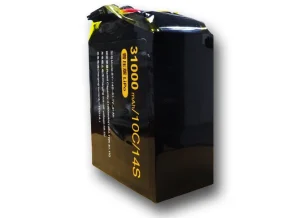Understanding Solid-State Electrolytes
Definition and Key Features
Solid-state electrolytes move ions between a battery’s anode and cathode. They replace liquid electrolytes used in standard batteries. Their main traits include strong thermal stability. They are non-flammable. They offer higher energy density. These qualities make them ideal for advanced energy storage. Unlike liquid versions, they work across wide temperatures. They improve safety. They eliminate risks of leaks or fires.
Comparison with Liquid Electrolytes
Solid-state and liquid electrolytes differ in form. Liquid ones use organic solvents. These can be unstable and flammable. Solid-state electrolytes use ceramics, polymers, or hybrids. Their solid form enhances safety. They also allow lithium metal anodes. These provide more capacity than graphite anodes in traditional batteries. This boosts energy density.
Material Challenges in Solid-State Electrolytes
Limits of Ionic Conductivity
A key hurdle is ionic conductivity. Liquid electrolytes let ions flow freely. Solids often resist ion movement. Their rigid structures cause this. It slows charge and discharge rates. Researchers test materials like sulfides and garnet ceramics. These need careful design. They must improve ion paths. They must also stay structurally sound.
Electrode Material Compatibility
Compatibility with electrodes is tough. Lithium metal anodes form dendrites. These needle-like growths can pierce the electrolyte. This risks short circuits or battery failure. Creating interfaces to stop dendrites is vital. These must allow smooth ion transfer. They must maintain efficiency.
Interface Stability’s Role
Interface stability affects battery life and performance. Reactions between electrolyte and electrodes can degrade materials. This lowers efficiency. It shortens cycle life. Stable interfaces need special coatings. Engineered interlayers help too. These reduce chemical reactions. They support ion movement.
Manufacturing and Scalability Challenges
Complex Production Processes
Making solid-state batteries is intricate. It differs from lithium-ion battery methods. Techniques like thin-film deposition or sintering are used. These need special equipment. They require precise conditions. This makes large-scale production hard. High accuracy is crucial for uniform components.
Cost of Advanced Materials
Advanced materials raise costs. Sulfides and garnet ceramics are expensive. They outprice standard battery tech. Specialized manufacturing adds expenses. These costs hinder competition with existing batteries based on price.
Uniformity at Scale
Uniform electrolyte layers are vital. They ensure steady performance. Achieving this in mass production is tough. Variations in thickness or composition cause issues. They lead to uneven ion flow. This cuts efficiency. It raises failure risks. Advances in material science are needed. Better manufacturing methods are critical too.
Safety Concerns Related to Solid-State Electrolytes
Mechanical Stability Under Stress
Solid-state electrolytes have advantages. Yet, they face mechanical stability issues. Battery cycles cause electrode volume changes. These stress the electrolyte. This can lead to cracks or delamination. Such flaws disrupt ion paths. They lower conductivity. They raise short-circuit risks. Researchers explore polymer-ceramic composites. These add flexibility. They reduce stress damage.
Many solid electrolytes are brittle. Ceramic ones are especially rigid. They fracture during production or vibrations. Elastomeric or hybrid materials are promising. They blend strength with resilience. This tackles the issue.
Risks of Dendrite Formation
Dendrites pose safety risks. These lithium deposits grow during charging. They can pierce the electrolyte. This causes short circuits. It may trigger thermal runaway. Solid electrolytes resist dendrites better than liquids. Yet, they’re not immune. Uneven current or interface flaws worsen growth. Solutions include protective electrode coatings. High shear modulus electrolytes help too.
Self-healing electrolytes are innovative. They repair small damages automatically. This prevents bigger failures.
Future Directions and Research Focus Areas
Material Innovations for Conductivity
High ionic conductivity is key for adoption. Research targets new materials. Sulfides and garnet ceramics are studied. Polymer-based electrolytes are too. Sulfides match liquid electrolyte conductivity. They need careful handling. They’re moisture-sensitive.
Hybrid polymer-ceramic composites are promising. They combine polymer flexibility with ceramic conductivity. They work well in varied conditions. Doping tweaks material properties. It enhances performance at the atomic level.
High-energy-density battery packs from Taixing Shengya Electronic Technology Co., Ltd. show progress. Their energy density reaches 340wh/kg.
Simplifying Manufacturing
Manufacturing complexity limits scalability. Thin-film deposition and sintering are challenging. They need precise control. They require costly equipment.
Alternative methods are explored. Roll-to-roll processing is one. 3D printing is another. These speed production. They maintain uniformity. Pre-fabricated electrolyte sheets are promising. They integrate easily. They skip extra processing.
Cutting reliance on rare materials is key. Using abundant alternatives lowers costs. It keeps performance high.
Advances in Testing for Reliability
Long-term reliability needs robust testing. Traditional tests miss complex interactions. They fail over long periods.
In situ microscopy and spectroscopy help. They observe battery changes live. They reveal dendrite growth. They show interface wear. Machine learning analyzes test data. It spots failure patterns. This aids predictive maintenance. It extends battery life. It boosts safety.
Standardizing tests globally is crucial. Consistent benchmarks allow tech comparisons. They speed commercial progress.
Frequently Asked Questions
Why are solid-state electrolytes safer?
They’re non-flammable. They avoid leak or fire risks tied to liquid electrolytes.
How do dendrites affect solid-state batteries?
They pierce electrolytes. This causes short circuits. It risks thermal runaway if unchecked.
What material advances are underway?
Sulfides and garnet ceramics are key. Polymer-ceramic hybrids and doping boost conductivity. They maintain strength.
Are solid-state battery processes scalable?
Current methods like thin-film deposition are tough. Roll-to-roll processing aims to simplify and cut costs.










